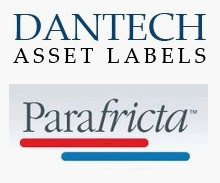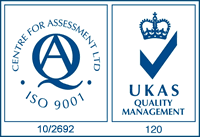Joined Up Stock Control Thinking
26/01/2012
The stock status decision (i.e. “stock” or “no stock” as well as the safety stock decision you make will have an extremely significant impact on how well your inventory will perform in terms of the capacity fill it offers and the capital which it needs. For the majority of inventory systems, the stock status decision for each item will be made first and then followed by the stock safety one, and these two critical decisions are almost always made based on entirely separate and disparate criteria.
As an example, a stock status decision might be along the lines of “make sure to stock any item that has been ordered at least four times in the last eighteen months.” A safety stock decision might be to stock “two weeks’ worth of the item.” Both decisions are applied independently and at different times in the stock control cycle, but there is a better way to do this!
If you make your stock control and safety decisions at the same time and using the same sort of criteria your inventory is bound to perform better by giving you a higher fill for less capital outlay. Nor is it particularly difficult to see why; after all, the two decisions have identical effects. Stocking another item does much the same as increasing the safety stock levels of an already stocked item, increasing the fill of the inventory and the capital which is needed. It makes perfect sense to make these decisions together to the same standards but remarkably of those involved in inventory management will do so.
Consider a model inventory like this one:
- Items A, B and C all have stock status “no stock” and thus also no safety stock.
- Items D, E and F all have stock status “stock” and a fixed level of safety stock.
In order to increase the fill of this inventory you could take several measures which are both very general and very specific in turn. You could change the stock status of items A, B and C to “stock,” which would increase the level of fill as well as the needed capital for the entire inventory. Alternately, you could just increase the level of safety stock for any or all items of D, E and F. Both measures here would give the same effect of higher provided fill and more needed capital. Admittedly the precise figures would depend on the specifics of the items, but the effect is much the same regardless.
In this situation you should also consider a couple of far more specific options. Firstly, you could make items A, B and C “stock” items with a safety stock of zero, or you could increase the safety stocks of items D, E and F by one. Choose the option which provides the best benefit, as restriction the consideration to just one of the alternatives (or comparing them with different criteria) will drastically degrade stock performance.
The same sort of principle can apply in the opposite manner if you want to produce more cash from your inventory and are happy to handle a reduction in the level of fill. All you need to do is make the same sort of stock status and safety stock decisions together and you’ll get far more cash out for a lower decline in inventory fill.
Think about this in terms of your own stock control and supply chain management processes. Do you operate like most people, first choosing which items to stock and then deciding on their safety stocks? Organisations that split these choices up or make them based on different variables and needs inevitably lower the performance of their inventory, resulting in a diminished fill which needs a larger capital investment.
So if you thought you had already mastered everything to do with inventory optimisation, try making this simple change which you are in all likelihood not currently taking advantage of. As well as far more controllable levels of both fill and capital flow, you’ll see a boost in your inventory performance that will more than compensate for the adjustment in your thinking.
If you are looking for help with your inventory optimisation and warehouse best practice, or just general input on any of your supply chain management, visit Gideon Hillman Consulting at www.hillman-consulting.co.uk for expert advice from an industry leading consultancy.

























